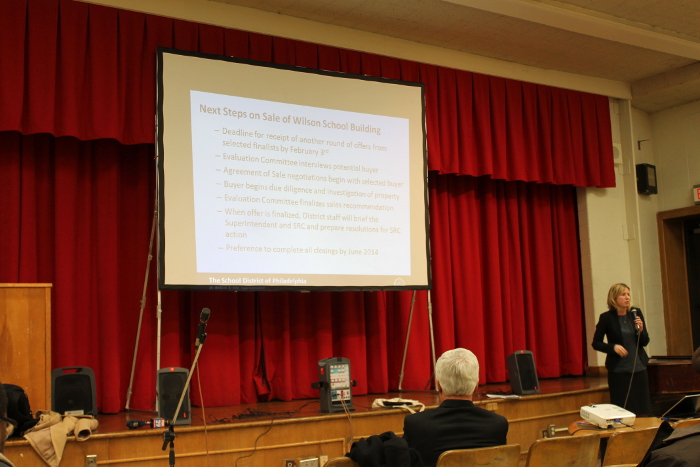
School District Chief Operating Officer Fran Burns talks about the district’s plan to sell the Alexander Wilson School building at 46th and Woodland to developers who will likely convert it to a retail/residential building.
It appears that a mixed-used retail/residential building will replace the Alexander Wilson School (46th and Woodland), which the school district closed last June.
Officials from the School District of Philadelphia said during a public meeting Thursday night that all of the leading bids on the building proposed similar uses – a combination of street-level retail and housing. The district’s Chief Operating Officer Fran Burns told about 25 residents gathered in the auditorium of the Henry C. Lea School that it’s “probably not going to be a demolition, but a major renovation within.”
The final bid will not be officially announced and approved until the School Reform Commission (SRC) meeting on Feb. 20 or March 20 (we’ll let you know when we know). No other uses for the building, which many in the community hoped would reopen as a charter school, were proposed by developers and no more offers will be accepted.
Although the purpose of Thursday’s meeting was to elicit public comment on the proposal, officials offered very few details, which frustrated many in attendance.
“I’m a little frustrated about how little of this process seems to be about the impact on the neighborhood,” said a resident who lives near the school.
Burns hinted that the offers proposed student and “multi-family” residences and that senior housing was not part of any of the proposals. No charter school offered a bid, but the nearby University of the Sciences expressed some interest, Burns said.
There are more opportunities for public input, including at the SRC meeting and during the zoning process, but that will be input on the project’s details, not on whether the building should become housing or something else.
Neither the names of bidders nor bid amounts were released. Burns would not say how much is owed in bond payments on Wilson, but said that the sale of the closed schools will not do much to offset budget problems.
“The budget will not be fixed through property sales,” she said.
Here are some more details on the sale process.
The district hopes to close the sale of the school by June 30.
–Mike Lyons


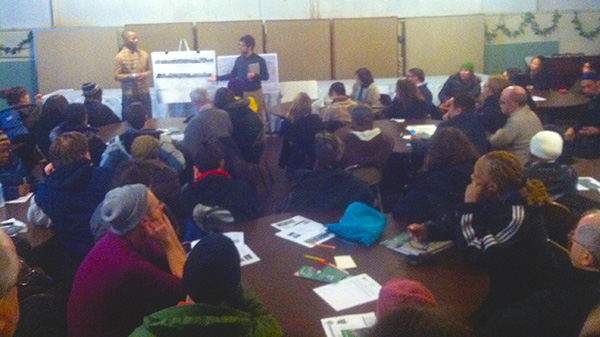
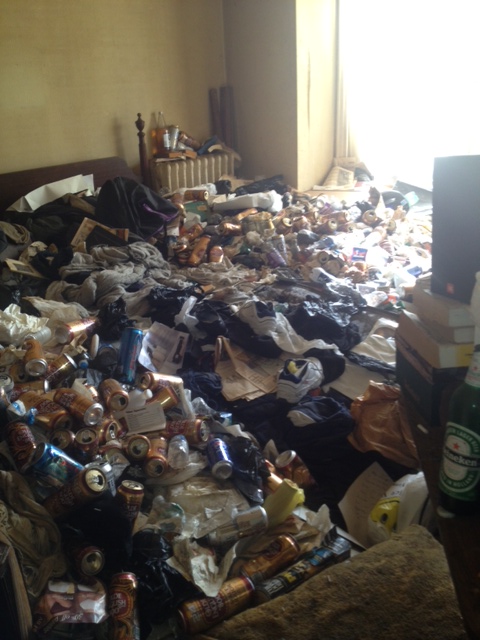
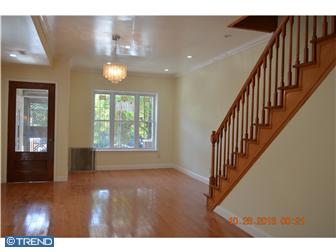
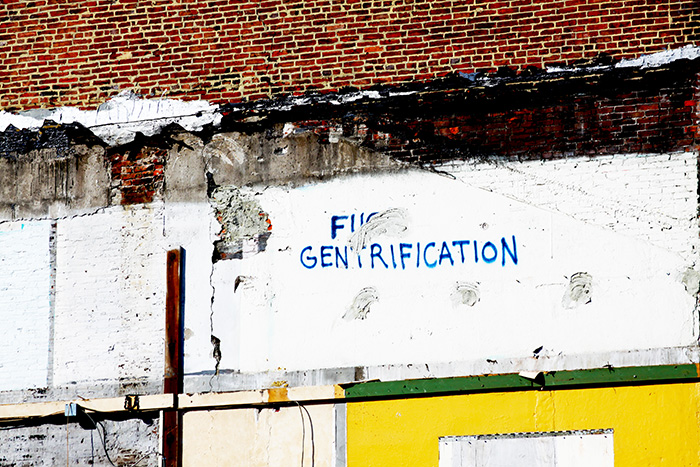
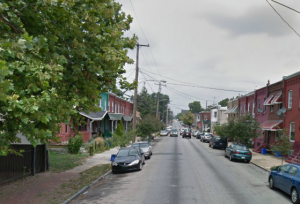
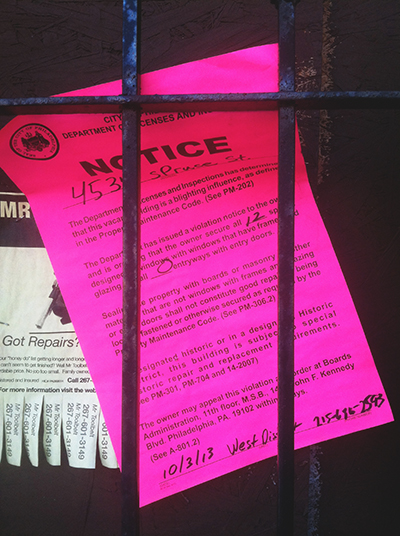
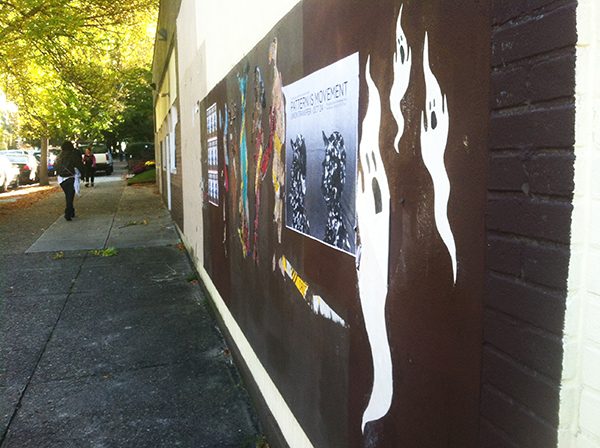




Recent Comments